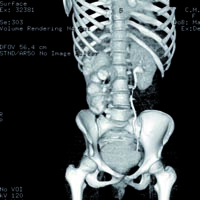Case Reports
Vol. 44 No. 1 (2022)
Staghorn stone in megapolycalicosis in a child: Still the case for open surgery? Case report

Publisher's note
All claims expressed in this article are solely those of the authors and do not necessarily represent those of their affiliated organizations, or those of the publisher, the editors and the reviewers. Any product that may be evaluated in this article or claim that may be made by its manufacturer is not guaranteed or endorsed by the publisher.
All claims expressed in this article are solely those of the authors and do not necessarily represent those of their affiliated organizations, or those of the publisher, the editors and the reviewers. Any product that may be evaluated in this article or claim that may be made by its manufacturer is not guaranteed or endorsed by the publisher.
Received: 7 March 2020
Accepted: 19 January 2022
Accepted: 19 January 2022
1089
Views
491
Downloads
24
HTML







